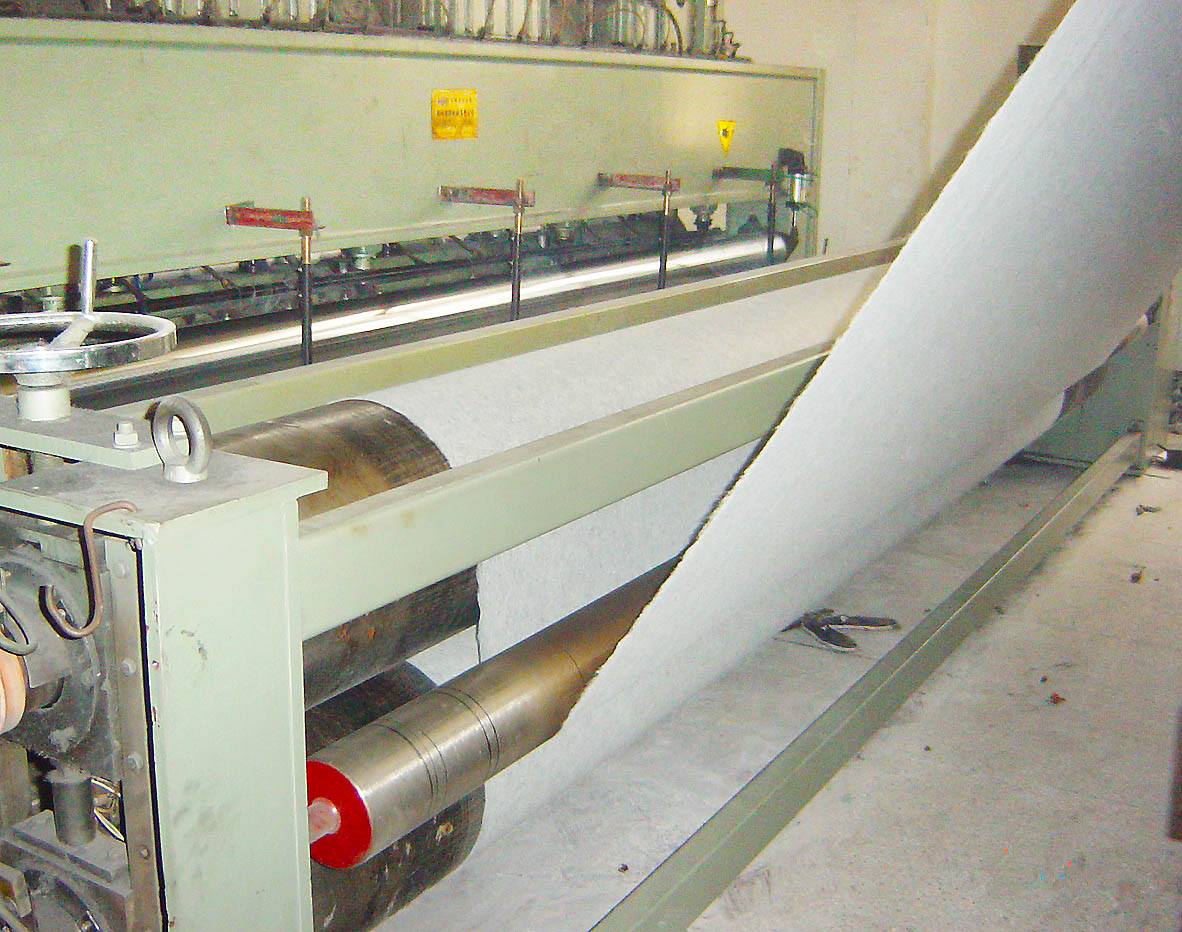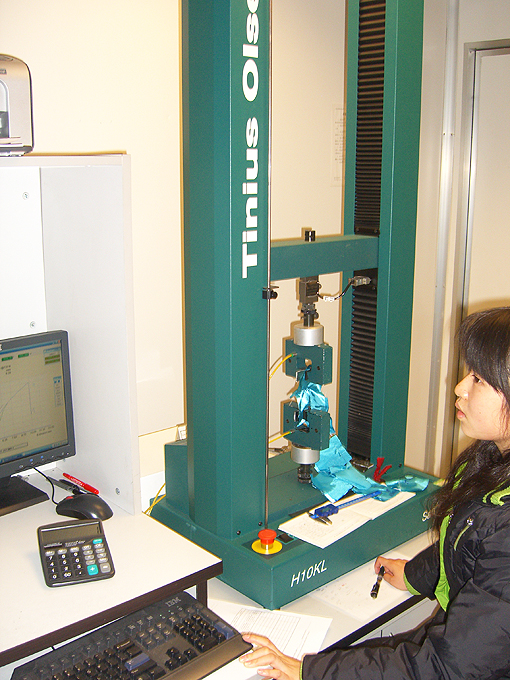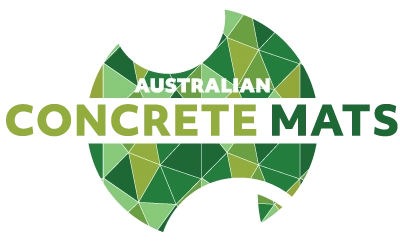
Heat bonding of staple fibre, needle-punched, geotextile
Our polyester and polypropylene nonwoven staple fibre, needle punched geotextiles are manufactured to ISO 9001 quality standards. Three beds of barbed needles are punched and pulled through layers of loose, randomly oriented, short staple fibres to form a strong and stable matrix. The geotextile’s strength can be further increased using heated rollers to thermally bond the fibres together. Heat bonded fabric has a flatter, smoother surface with lower elongation.
Nonwoven staple fibre geotextiles can withstand harsh installation conditions and high construction loads. Needle punched nonwovens combine flexibility and high elongation with high puncture resistance. They offer superior filtration (AOS<0.075mm) and prevent the ingress of fines into drainage media. Because staple fibre geotextiles achieve higher interface friction angles than similar weight nonwovens manufactured using other processes, they are beneficial for constructing a stable layer over soft foundation soils.
Staple Fibre Applications

Nonwoven QA Testing
- Separation
- Drainage
- Filtration
- Geomembrane Protection
- Environmental Protection
- Reinforcement
Nonwoven staple fibre needle punched geotextiles offer a cost effective alternative for separation, filtration and protection applications. They are also chemically resistant to naturally occurring soil environments and polypropylene nonwoven geotextiles have a strong resistance to acid environments (pH<3.5). Nonwoven geotextiles deliver high flow-through rates and excellent drainage performance. They accommodate soil irregularities, are more resistant to puncture damage from stones or other objects embedded in the ground and often used to cushion geomembranes. The abrasion resistance of staple fibre geotextiles is particularly beneficial when only gravel fills are available.












